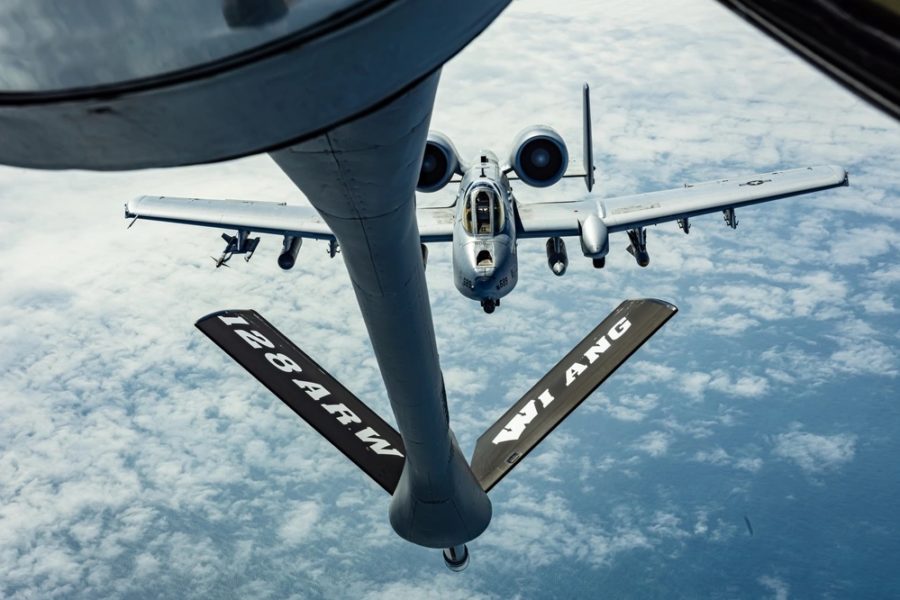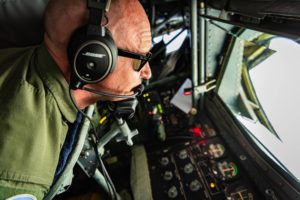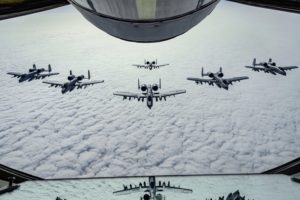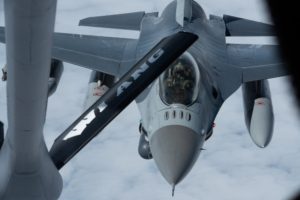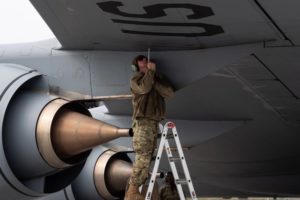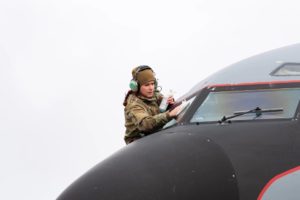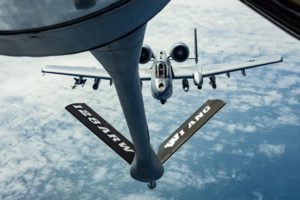Air Defender 23, the German-led air exercise that is the largest in NATO history, kicked off June 12 with roughly 100 of the 250 participating aircraft coming from Air National Guard units across the U.S.—and just getting all of those USAF planes across the Atlantic Ocean presented a unique challenge.
Many of the U.S. aircraft participating in Air Defender are fighters like the F-35, F-15, F-16, and A-10, which often do not have enough gas to cross an ocean on their own. That meant units like the 128th Air Refueling Wing of the Wisconsin Air National Guard had to step in with its KC-135s to ensure the aircraft can keep flying without having to land.
“Moving 100 aircraft over the ocean in the matter of four or five flying days is a monumental feat,” Maj. Brandyn Dietman, deputy director of air refueling for the 128th, said in a recent press release. “Fighter aircraft can’t make it over by themselves, so they need the tankers to build the air bridge to help them get over.”
Planning for Air Defender has been ongoing for some time now, and Dietnam noted the 128th had put in “a year’s worth of work” on the logistics of the air bridge.
After Air Defender 23 concludes, the unit will support air bridge operations back to the U.S. from its temporary assignment at Keflavik Air Base, Iceland, a spokesperson told Air & Space Forces Magazine.
Air bridge operations like those supported by the 128th demonstrate the U.S. and NATO’s ability to effectively respond to a real-world crisis.
“The whole point of this [exercise] is to integrate with our multi-national partners and show that we can seamlessly work as one large coalition force,” Dietman said.
Air Defender will test that integration through a fictional scenario in which an alliance of Eastern European countries invades Germany, triggering an international response to push back the imaginary belligerents. The exercise has been in the making since before Russia launched a full-scale invasion of Ukraine in 2022, but officials hope it will send a strong message of NATO airpower and solidarity as the conflict rages on.
“I would be pretty surprised if any world leader was not taking note of what this shows, in terms of the spirit of this alliance, which means the strength of this alliance,” Amy Gutmann, the U.S. ambassador to Germany, told reporters. “That includes [Russian President Vladimir] Putin.”
The exercise will feature real-world simulated combat, missile defense as well as “the political, economic and media levels” of conflict, according to the Germany military.
Beyond U.S. fighter jets, Air Defender 23 also incorporates MQ-9s, C-130s, KC-135s, C-17s, and KC-46s, as well as European fighters such as Eurofighters, Tornados, Gripens, and American-made export model F-16s and F-18s. The exercise will take place mainly in three areas over Germany, though there will also be forward operating locations in the Czech Republic, Estonia, and Latvia.
U.S. bombers are also participating in Air Defender 23—B-1B Lancers from the 7th Bomb Wing are currently on a Bomber Task Force deployment based out of RAF Fairford, U.K., and joined the exercise to conduct hot-pit refueling in Romania. Hot-pit refueling entails an aircraft landing and keeping an engine running while it receives gas so it can quickly take back off again.
